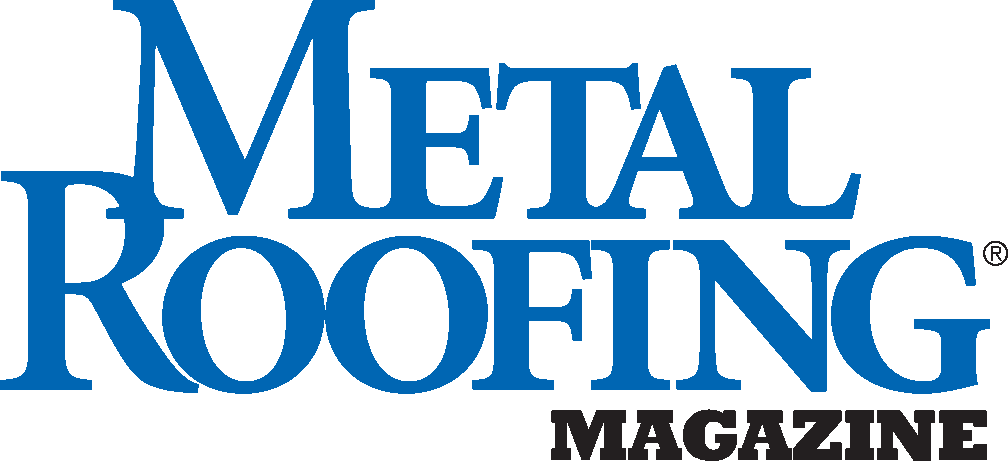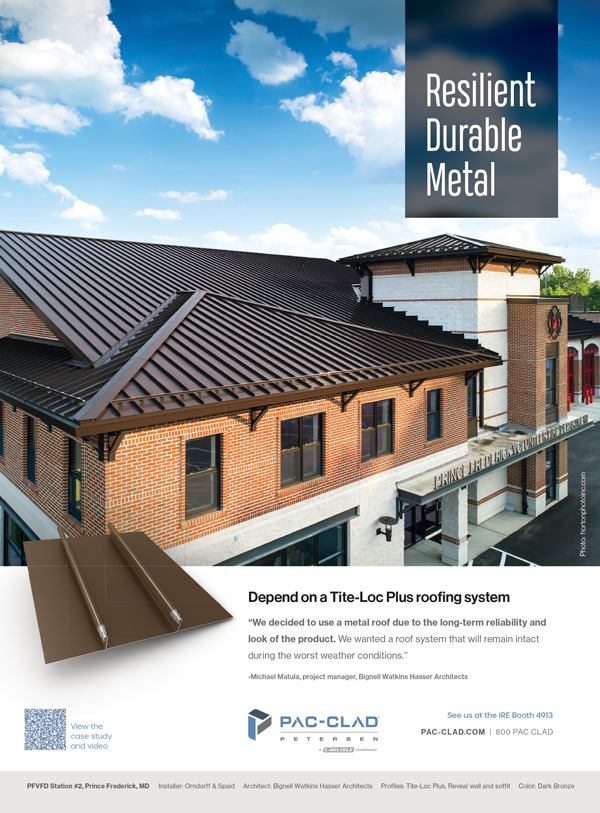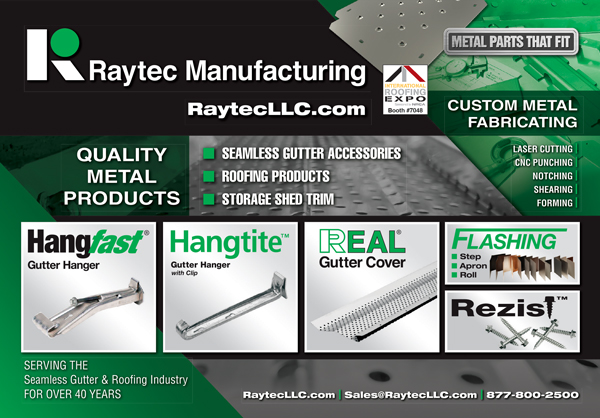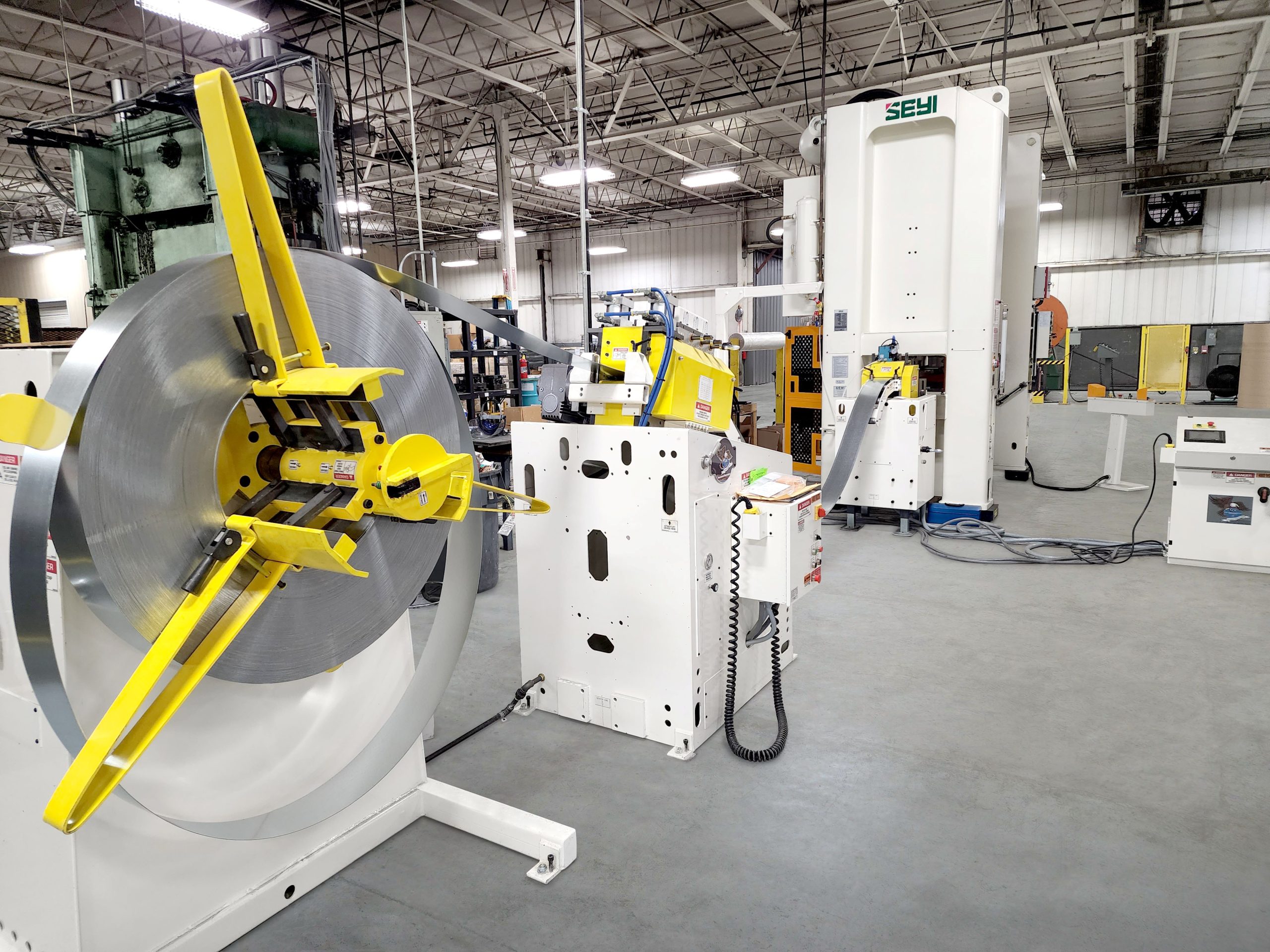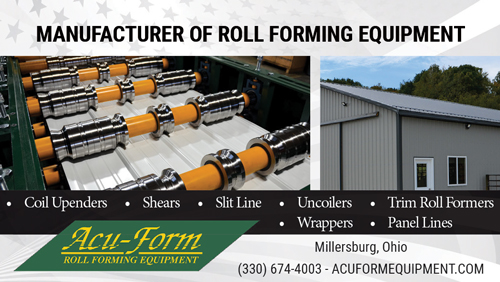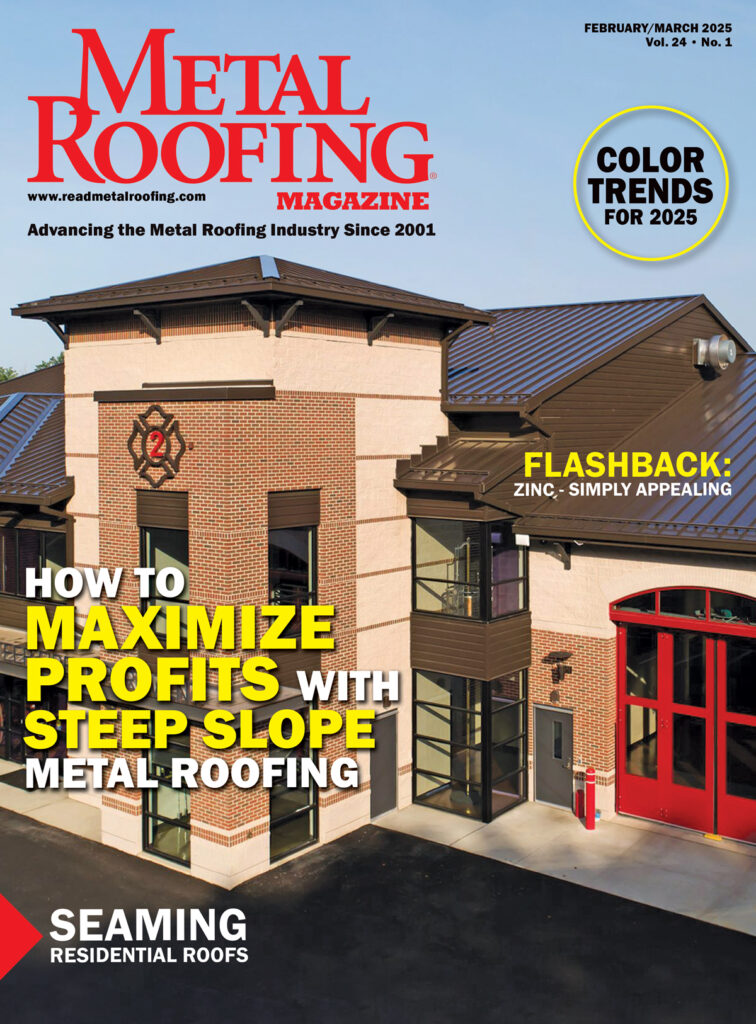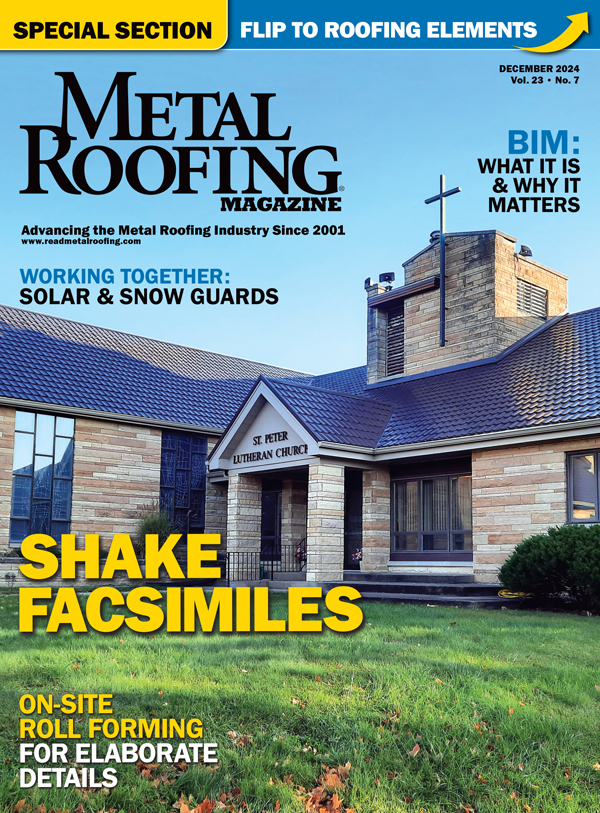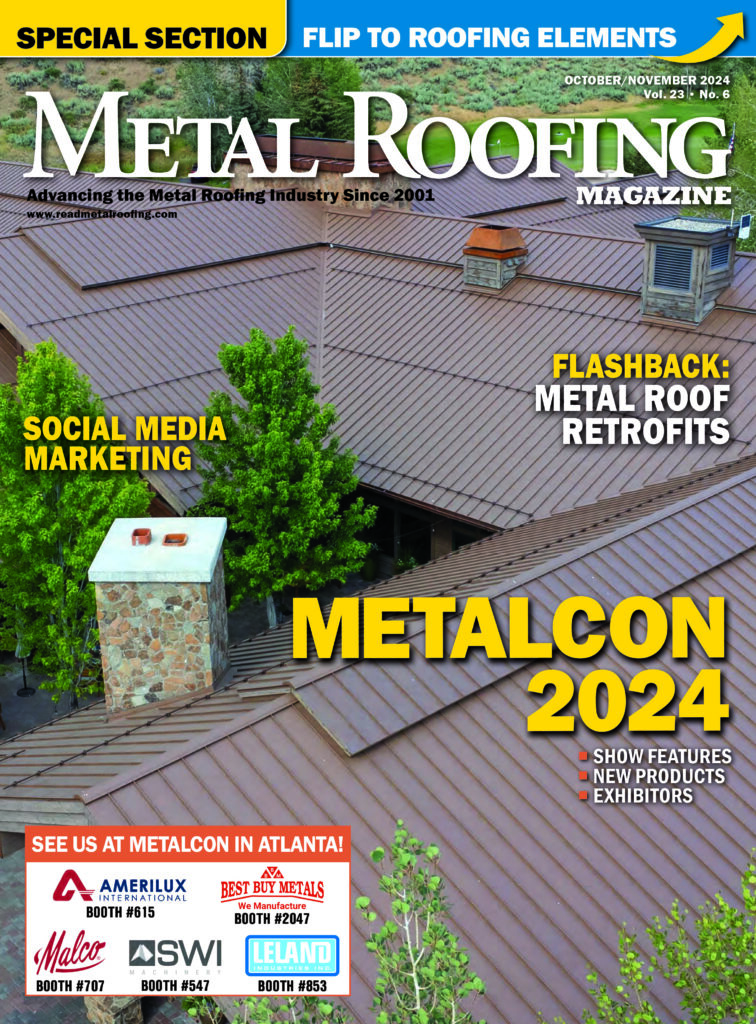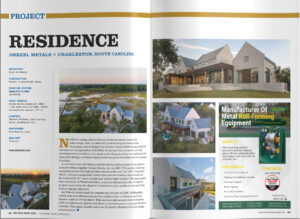Over the last 20 years, metal products have dramatically increased their share of the roofing industry. Recently, there have even been indications that future insurance industry regulations and legislation may further fuel the growth of metal roofing.
While many metal projects are still carried out by contractors who specialize in metal, the industry is seeing more and more “full line” roofing contractors also offering metal options. In order to continue the growth and reputation of metal roofing, we need contractors who are profitable and anxious to continue to install metal roofs and service their past installations.
Successful metal roofing contractors share a number of common attributes amongst their businesses. Those attributes break down into these five areas: Business Strategy, Marketing and Positioning, Numbers, Systemization, Installation, Pricing, and Exit Strategy. In each of these areas, there are particular key strategies to command.
Business Strategy
First of all, success in this industry requires guidance from accounting, banking, legal, and insurance professionals. Trying to cut corners in any of these areas by relying on your sister-in-law or favorite childhood cousin puts a business at risk. On the other hand, trusted professionals will help you establish a solid foundation for your business as well as ensure that you have the proper licensing and insurances to do business in your area.
Next, be sure to have written Core Values for your business that are frequently communicated to your team members as well as to any sub-contractors you use. Core Values establish the banks of the river for your company’s actions. Combined with a thoughtfully crafted Mission Statement, these items become litmus tests for all major (and minor!) decisions that are made by your company.
Finally, be sure to choose quality products that will not put your company at future risk due to their own poor performance. Build positive relationships with suppliers who support your business with leads and referrals as well as with training for the critical areas of marketing, sales, and installation.
Marketing and Positioning
Be sure to identify your target customer. This is the customer that your Marketing efforts will be directed to. You certainly may sell to other customers but your target is the customer that you want to sell to the most. This will be based upon a combination of the demographics of your area and the products you’re promoting. For example, you may be promoting lower cost products to an “entry level” customer or you may promote premium products to a more mature customer. Choose the customer that your company will be most appealing to.
Position your company as your area’s metal roofing expert. This can be done through your marketing messaging, social media posts, or perhaps by hosting a home improvement show on the local radio station or writing a regular column in the local newspaper. There is always some mystery to metal roofing – establish yourself as the consultative expert who can guide consumers through that mystery to the right decisions for themselves and their homes.
Be sure to always sell to benefit your customer – not yourself. Know your competition well and be able to explain what makes you different from them. This needs to be part of your consistent, carefully scripted sales presentation. Many metal roofing manufacturers will have templated presentations to get you started.
Work to maximize the referral business your company obtains. Reserve part of your Marketing budget for touches with past customers. And, as your business matures, make changes or additions to your product line only for increased profitability. Growing for growth’s sake will increase your headaches without increasing the reward.

Photos courtesy of Isaiah Industries.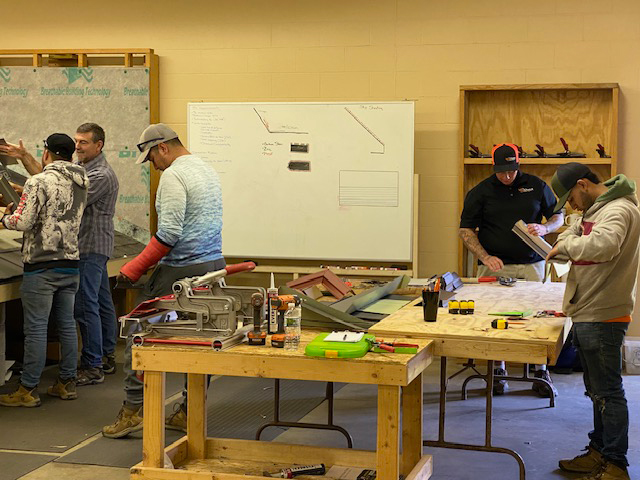
Hands-on installation training aids your company’s positive reputation .
Photo courtesy of Isaiah Industries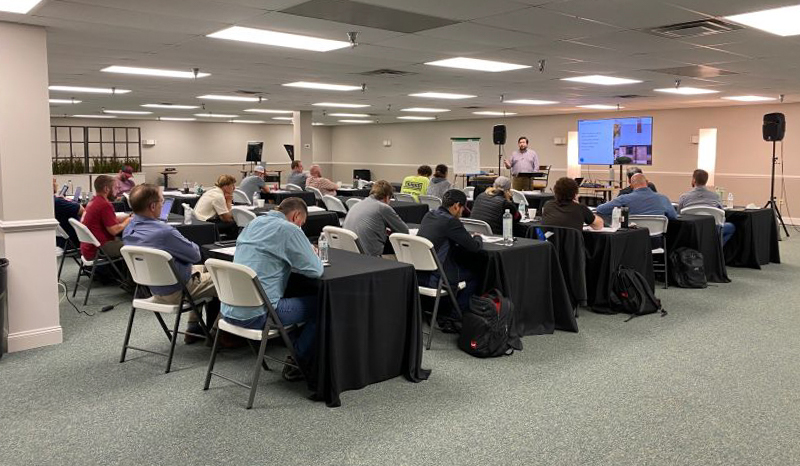
A properly trained sales team is essential for business success.
Photo courtesy of Isaiah Industries
Know Your Numbers
Careful analysis of your lead generation numbers will guide your Marketing efforts and also provide the information you need to properly price your projects and allow for the necessary Marketing cost on every job you sell. These numbers will help you identify your raw lead cost and your Marketing cost per sale.
Producing monthly financial statements, supplemented by careful cost analysis of each completed project, is critical and a step that is skipped by many contractors. It is very important to know when and where you’re making (or losing) money. This is where that trusted financial advisor comes into play along with a skilled bookkeeper.
Finally, analyze all expenditures very carefully. All that glitters will not necessarily make you gold! Many contractors have gone out of business by loading themselves up with debt for vehicles, equipment, and technology that they really could have gotten along just fine without. Practice “Zero Base Budgeting” – don’t spend a dime unless you’re certain of its return on investment.
Systemization
McDonald’s has ridiculously high employee turnover yet they deliver a very consistent customer experience. You can expect that Quarter Pounder With Cheese to smell and taste the same no matter which location you visit. (Is your mouth watering yet?) McDonald’s does this through systemization and training.
By building defined and documented systems into your business, you remove the guesswork from your team members, reduce your own time putting out fires, and deliver a consistent customer experience that stays within the banks of your Core Value river.
A great place to start systematizing your business is by reading The E-Myth or The E-Myth For Contractors, both by Michael Gerber. You will find that younger generation team members especially appreciate this approach to business. If you’ve ever wondered how some business owners can take time off and still have things go just fine within their business, systemization is the answer.
An additional bit of advice along these lines is to hire team members based upon their fit to your company culture and Core Values. You can train on skills but basic behavior and personal integrity are either in keeping with your culture or not – there is usually nothing you can do to change those things.
Installation
Ensure that your company has a solid Safety Program that meets OSHA guidelines and regulations. Obtaining the help of a safety consultant can be very beneficial in this area.
It is also important to maintain positive relationships with your installation crews, whether they are W-2 employees or 1099 sub-contractors. Never think of yourself as finding your profitability by short-changing your installers. Installation will either break your company or propel it to successful growth.
Be sure to take advantage of any training and credentialling offered by your suppliers or other industry members. This training will carry your company far in terms of reputation and professionalism while also becoming an important part of selling your business to prospective customers.
Finally, be very careful to minimize jobsite waste. A 20% materials waste factor rather than 5% will eat your profitability and your lunch!
Job Pricing
We touched on this earlier but it’s critical enough to touch on it again. Know all of your costs so that you can price jobs properly. This can often start by having your materials supplier help with quotations for each individual project, including their estimate of expected jobsite waste.
In addition to your actual project costs, you must know your overhead costs and build those into the project cost as well. This can be done based upon a consistent percent of sales price or based upon a consistent percent of your direct labor costs.
Marketing costs will usually be attributed as a percent of the sales price. An industry benchmark for many successful contracting companies is 15-18% of your selling price. If your percent runs less than this, you’re either very lucky or not maximizing your potential.
Offering financing options to your customer will also help you close more deals. In fact, here’s a pro tip for you: When selling residential metal roofing, think of your competition as being that customer’s next new car. The cost of their roof will likely be similar to what they might pay for their next new car. So, especially when offering financing, you’re asking them to put off that next new vehicle purchase in favor of a new roof – be sure to point out that the roof will hold and even increase its value over time, something in stark contrast to that new car!
Exit Strategy
It may seem odd to base your business in part upon your eventual exit strategy but this is a hallmark of profitable and successful business owners. It’s a sad fact that, when many owners of construction businesses reach retirement age, they find that their business value is little more than the value of some used equipment and vehicles.
Successful and profitable business owners instead build businesses based on systems and other things that result in a business with considerable value when they go to sell it, giving them money to live out their dreams after retirement as well as before.
By holding these key things as key practices and attributes of your metal roofing business, you will find profitability for years to come. MR
Todd Miller is president of Isaiah Industries, a leading manufacturer of residential metal roofing. Over his 40+ year career, Todd has worked with thousands of contractors, helping them achieve ever-greater levels of success.

